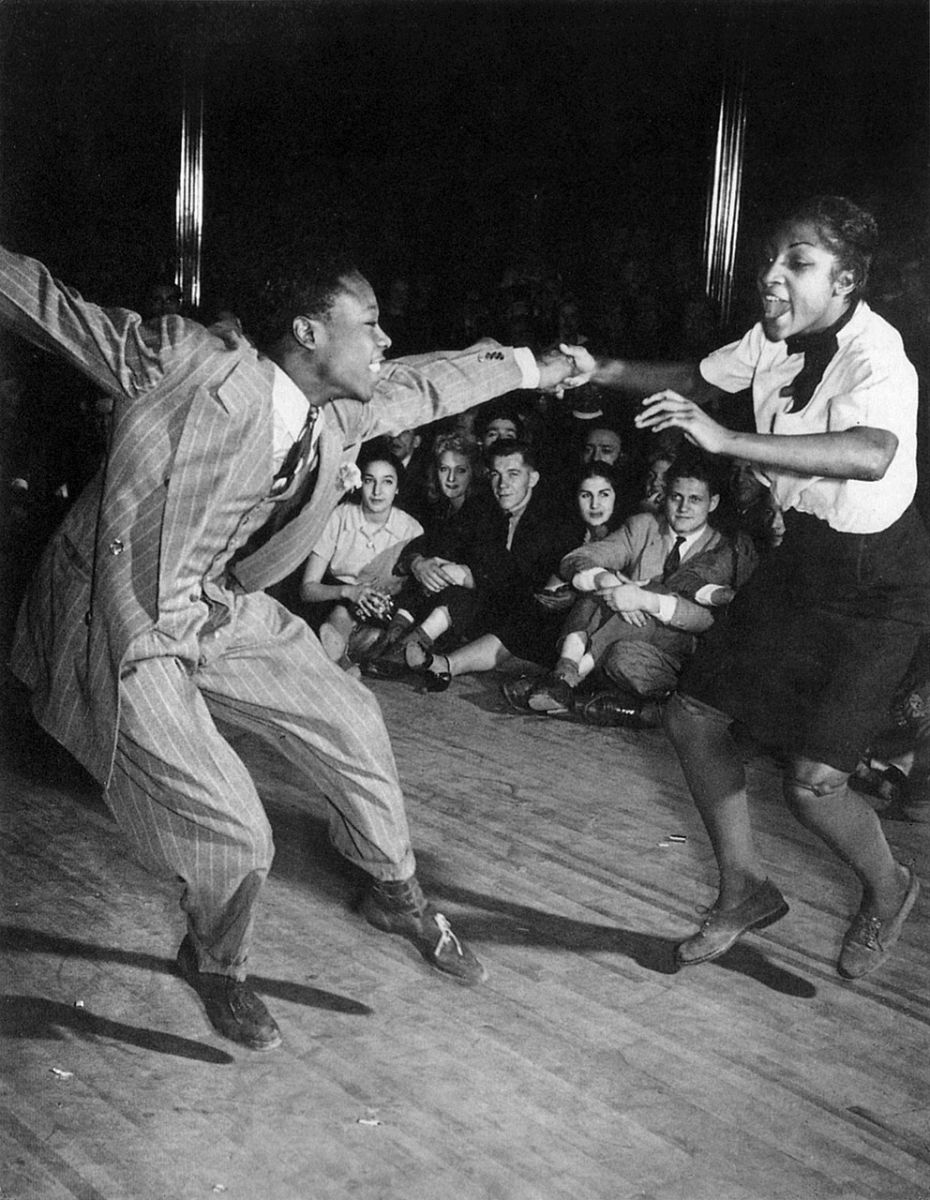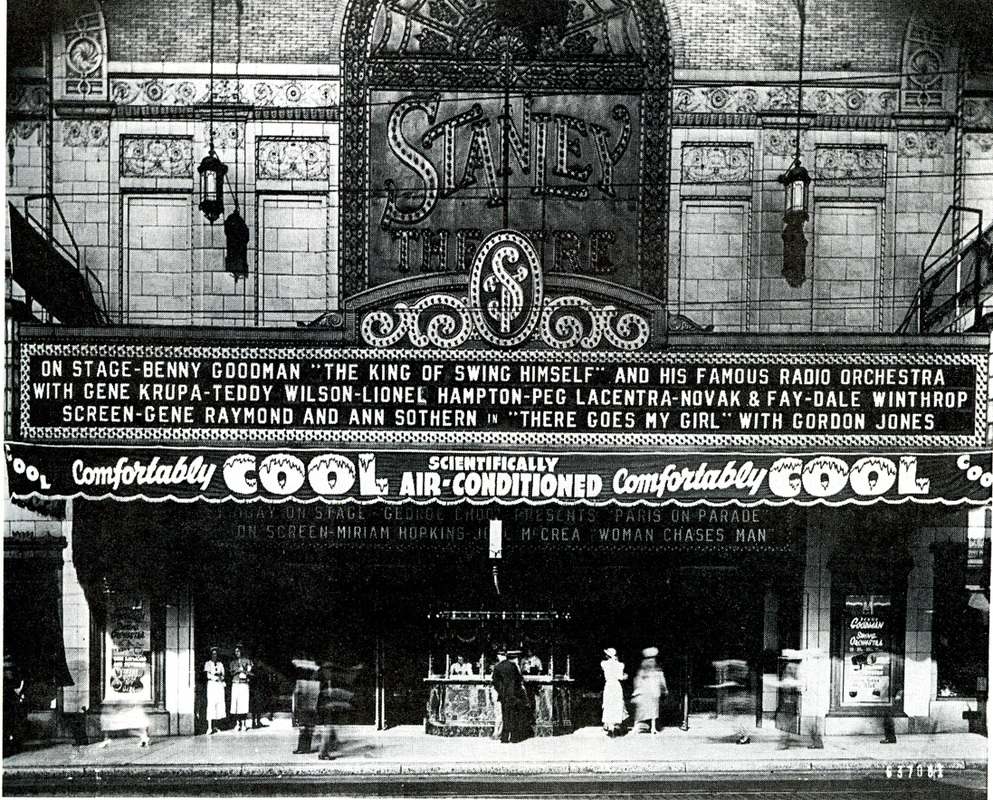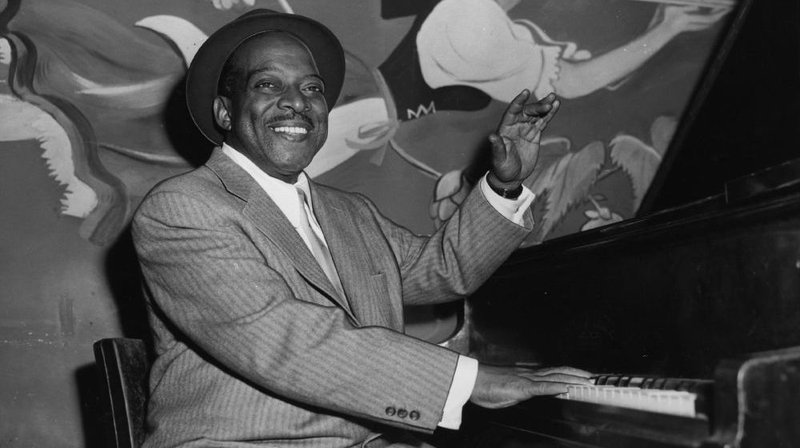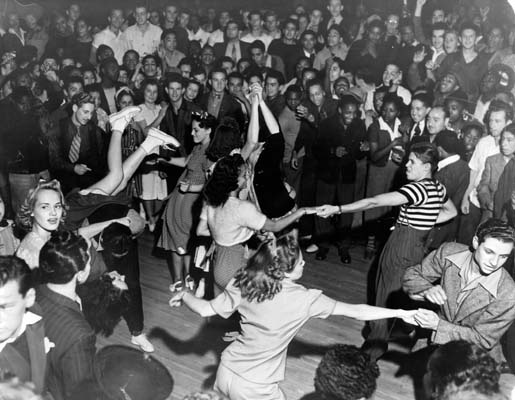Swing was a way of life for young people in America for almost two decades—beginning in the 1930s, through the war years, and to the end of the 40s. It was a look with a sturdy All American feel to it. There were white shirts with suspenders, and tailored trousers with wing tip shoes for the guys. There were ankle socks with high-heeled shoes, barrettes and baby-doll sweaters, or pleated skirts and saddle shoes for the young women.
The dance floor was where the faithful devotees of Swing worshipped. They packed ballrooms like the mammoth Hollywood Palladium in California which could handle 6,500 dancers, the Roseland and Savoy Ballrooms in New York, and the Meadowbrook in New Jersey. Swing popularized an athletic kind of partner dancing with acrobatic aerials for those who liked to live close to the edge. The Lindy Hop, named after Charles Lindbergh’s historic solo flight across the Atlantic, evolved into the Jitterbug, the Big Apple and the Suzi Q.

Frankie Manning, one of the Savoy's most famous dancers, 1930's. Photo in public domain.
The fuel that powered all this dancing was the unforgettable music. The Swing Era was a golden age when jazz was popular, bankable, mainstream music. There were several groundbreaking jazz bands working at about the same time: Duke Ellington, Count Basie, Artie Shaw, Jimmy Lunceford, the Dorsey Brothers, Benny Goodman, Harry James, Earl Hines, Cab Calloway, Bob Crosby, and more. In living rooms across the country, the sweet and hot sounds of Swing poured out of big floor model Atwater Kent radios. Everywhere, homework and housework and tinkering on the car were done to the sound of the big Swing dance bands.
This week Riverwalk Jazz features performances of Swing Era classics by The Jim Cullum Jazz Band and their guests.
Jazz history books often say that the Swing Era was born on August 21, 1935 at the Palomar Ballroom in Los Angeles when the Benny Goodman Orchestra launched into one of their personal favorites, "Sugar Foot Stomp," in a last-ditch attempt to get the lethargic crowd on its feet and dancing. It worked like magic—Goodman’s career and the Swing craze took off like a shot.
But the roots of Swing can be traced to the territory bands of the southwest in the late 20s, and a hotbed of creativity in Kansas City in the early 30s. K.C. bandleader Bennie Moten laid the groundwork for a rhythmic style that Count Basie built upon and delivered to a national audience.

The Stanley Theater in Pennsylvania, 1936. Courtesy littlesparrowstudios.com.
In August 1936 "Moon Glow" was the very first recording made by the newly formed Benny Goodman Quartet which featured Lionel Hampton on vibes, Teddy Wilson on piano, Gene Krupa on drums and Goodman on clarinet.
Less than a year later, the Benny Goodman Orchestra had a showdown at the Savoy Ballroom in Harlem in a knock-out Battle of the Bands with Chick Webb’s Orchestra. The ballroom was crammed with 4,000 Swing fans; another 5,000 were outside on the street trying to get in.

Count Basie. Photo courtesy NPR's "Jazz Profiles."
Count Basie’s live radio broadcasts from the Reno Club put Kansas City on the map and helped define the meaning of Swing for a generation of musicians and fans. Basie’s band was a hot house for stellar instrumentalists like saxophonists Lester Young and Herschel Evans; and trumpeters Buck Clayton and Harry "Sweets" Edison. When jazz writer Stanley Dance asked Basie for a definition of Swing, Basie remarked in an off-handed way, "it's music you can pat your foot by."
Photo credit for home page teaser image: Jitterbug dance in 1939 at the Palladium Ballroom in Los Angeles. Photo courtesy George Spink.
Text based on Riverwalk Jazz script by Margaret Moos Pick ©2002


